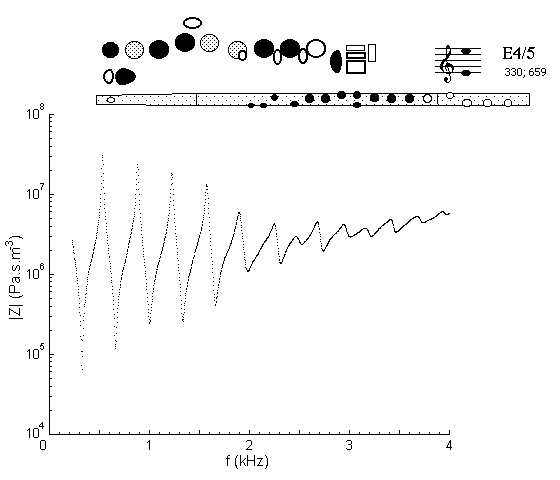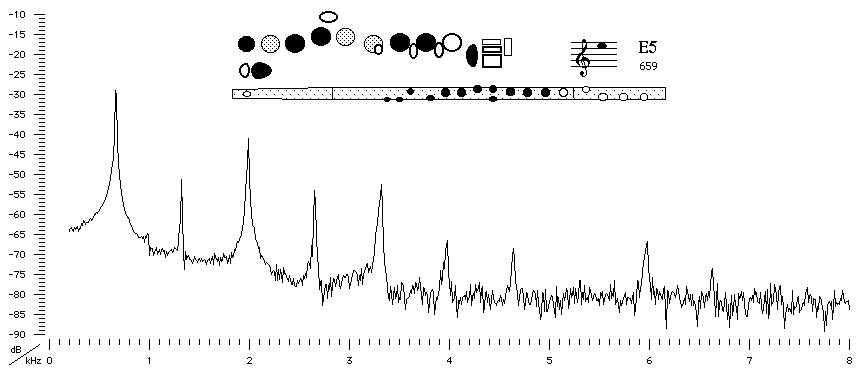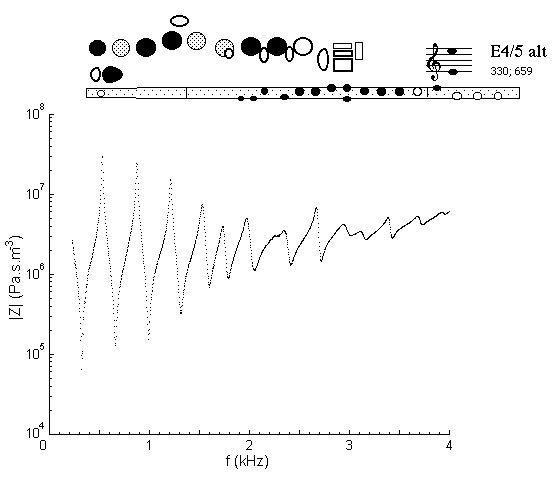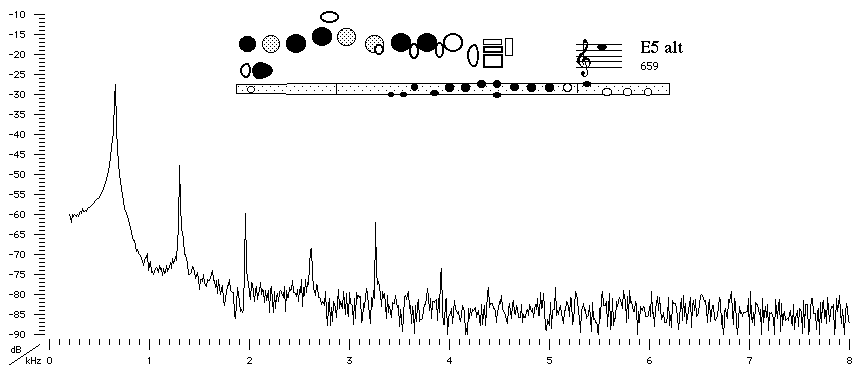| Acoustics of baroque, classical and modern flutes |
modern flute
|
E5 |

|
Fingering Acoustic schematic Non-specialist introduction
to acoustic impedance |
The flutist uses the same fingering for E4 and E5, but changes the speed, length and shape of the jet. The first five minima (E4, E5, B5, E6, G#6) can be played. All lower minima support harmonics in E4. In E5, only the even minima are involved. (Inaudible traces of the lower note are visible in the spectrum for E5 which has tiny bumps at harmonics of E4.)

Sound spectrum
of a modern flute with a B foot played using conventional
fingering for E5.
![]()
![]()
![]()
![]()
![]() You can hear E5
played with conventional fingering
by Geoffrey Collins.
You can hear E5
played with conventional fingering
by Geoffrey Collins.
Alternative Fingering |
modern flute B foot |

|
Fingering Acoustic schematic Non-specialist introduction
to acoustic impedance |
This fingering is used in D-E trills and in some fast passages. Because the D# hole is closed, this is acoustically equivalent to a cross fingering (hole closed downstream of an open tone hole). Notice the slight flattening of the 4th and the marked flattening of higher minima. This explains the relatively weak 4th and 5th harmonics in the E4 sound spectrum. The first four minima can be played, but the 4th (~E6) is flat.

Sound spectrum of a modern flute with a B foot played using alternative
fingering for E5.
![]()
![]()
![]()
![]()
![]() You can hear E5
played with alternative fingering
by Geoffrey Collins.
You can hear E5
played with alternative fingering
by Geoffrey Collins.
| Acoustic measurements are available for these flutes - modern B, modern C, classical C, classical D, classical flared, baroque Sound clips are available for modern B, classical flared and baroque |
To compare flutes, it is easiest to open a separate browser window for each instrument. |